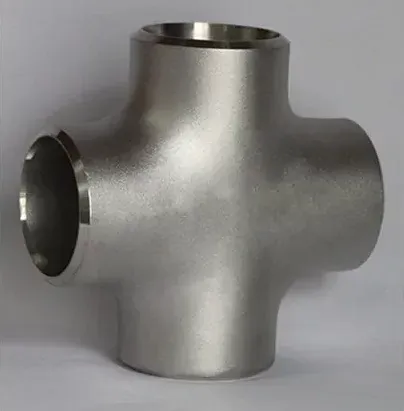-
Cangzhou Yulong Steel Co., Ltd.
-
Phone:
+86 13303177267 -
Email:
admin@ylsteelfittings.com
- English
- Arabic
- Italian
- Spanish
- Portuguese
- German
- kazakh
- Persian
- Greek
- French
- Russian
- Polish
- Thai
- Indonesian
- Vietnamese
- Zulu
- Korean
- Uzbek
- Hindi
- Serbian
- Malay
- Ukrainian
- Gujarati
- Haitian Creole
- hausa
- hawaiian
- Hebrew
- Miao
- Hungarian
- Icelandic
- igbo
- irish
- Japanese
- Javanese
- Kannada
- Khmer
- Rwandese
- Afrikaans
- Albanian
- Amharic
- Armenian
- Azerbaijani
- Basque
- Belarusian
- Bengali
- Bosnian
- Bulgarian
- Catalan
- Cebuano
- China
- China (Taiwan)
- Corsican
- Croatian
- Czech
- Danish
- Esperanto
- Estonian
- Finnish
- Frisian
- Galician
- Georgian
- Kurdish
- Kyrgyz
- Lao
- Latin
- Latvian
- Lithuanian
- Luxembourgish
- Macedonian
- Malgashi
- Malayalam
- Maltese
- Maori
- Marathi
- Mongolian
- Myanmar
- Nepali
- Norwegian
- Norwegian
- Occitan
- Pashto
- Dutch
- Punjabi
- Romanian
- Samoan
- Scottish Gaelic
- Sesotho
- Shona
- Sindhi
- Sinhala
- Slovak
- Slovenian
- Somali
- Sundanese
- Swahili
- Swedish
- Tagalog
- Tajik
- Tamil
- Tatar
- Telugu
- Turkish
- Turkmen
- Urdu
- Uighur
- Welsh
- Bantu
- Yiddish
- Yoruba

Dec . 05, 2024 14:51 Back to list
ansi class 125
Exploring ANSI Class 125 Standards and Applications
ANSI Class 125 refers to a specific classification of flanges, commonly used in various industries, including oil and gas, water, and wastewater management. The term ANSI stands for the American National Standards Institute, which is a private non-profit organization that oversees the development of voluntary consensus standards for products, services, processes, systems, and personnel in the United States. The classification system helps ensure interoperability and safety in the use of materials and components across different sectors.
Understanding ANSI Standards
The ANSI standards define a set of guidelines for the design, manufacturing, and testing of various components. For flanges, Class 125 signifies a allowed pressure rating of 125 pounds per square inch (PSI) at a standard temperature of 100 degrees Fahrenheit for cast iron. This pressure rating influences how the flange can be utilized within different piping systems, ensuring they can handle specific pressures without failure.
Key Features of ANSI Class 125 Flanges
ANSI Class 125 flanges generally come in a range of materials, the most common of which include cast iron, stainless steel, and carbon steel. The design of these flanges allows for easy connection to another piece of pipe or fitting, which is essential in many industrial applications. A notable feature of Class 125 flanges is their bolt pattern, which standardizes how flanges are bolted together, ensuring proper alignment and sealing capability to prevent leaks.
Applications of ANSI Class 125 Flanges
ansi class 125

These flanges are widely used in various applications, particularly in water supply and wastewater treatment plants. In these environments, durability and compatibility with different substances are crucial. ANSI Class 125 flanges are also a common choice in residential settings for heating and cooling systems, where consistent fluid flow is required.
In the oil and gas industry, ANSI Class 125 flanges find applications in moderate pressure systems. They are utilized in piping systems for transferring hydrocarbons, where pressure levels may fluctuate due to changes in temperature or operational requirements. Their ability to withstand such conditions makes them a reliable choice in this sector.
Advantages of Using ANSI Class 125 Flanges
One of the primary advantages of ANSI Class 125 flanges is their standardization. This means that engineers and operators can readily find compatible components across manufacturers, simplifying procurement and installation processes. The consistent design also makes maintenance easier as replacement parts are more accessible.
Moreover, ANSI Class 125 flanges offer a balance between pressure handling capabilities and ease of use. Their moderate pressure rating allows for flexibility in various applications without the risk of unnecessary over-engineering or increased costs associated with higher-class flanges.
Conclusion
In summary, ANSI Class 125 flanges represent an essential component within multiple piping systems, providing a reliable connection method for various industries. Their standardized design, pressure rating, and compatibility make them a preferred choice for numerous applications in water, wastewater, and oil and gas sectors. As industries continue to evolve and place demands on materials and engineering practices, the importance of adhering to established standards like ANSI cannot be overstated. Understanding these classifications and their implications not only fosters safety in engineering practices but also enhances the efficiency of operations across various applications.
Latest news
-
ANSI 150P SS304 SO FLANGE
NewsFeb.14,2025
-
ASTM A333GR6 STEEL PIPE
NewsJan.20,2025
-
ANSI B16.5 WELDING NECK FLANGE
NewsJan.15,2026
-
ANSI B16.5 SLIP-ON FLANGE
NewsApr.19,2024
-
SABS 1123 FLANGE
NewsJan.15,2025
-
DIN86044 PLATE FLANGE
NewsApr.19,2024
-
DIN2527 BLIND FLANGE
NewsApr.12,2024
-
JIS B2311 Butt-Welding Fittings LR/SR 45°/90° /180°Seamless/Weld
NewsApr.23,2024











